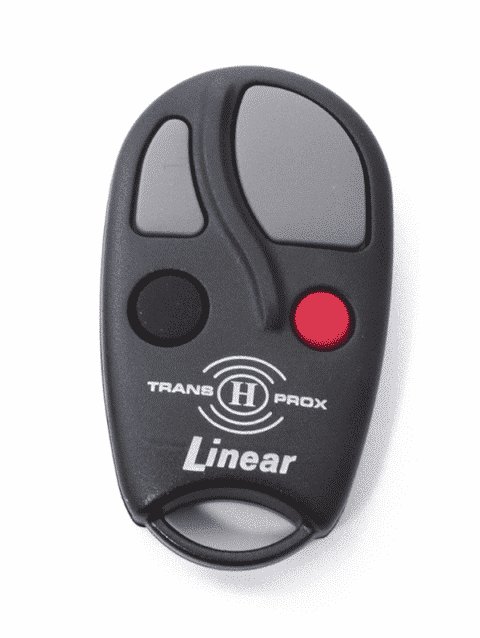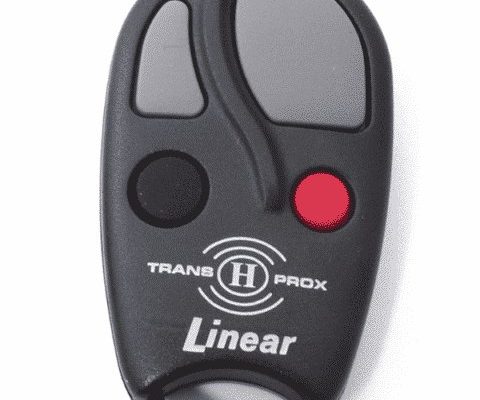
Linear garage remotes are popular for their reliability and straightforward design. If you’ve ever replaced a lost or broken garage opener, you’ve probably seen Linear models at the hardware store. But here’s the thing: just because a remote opens your garage door doesn’t mean your car’s HomeLink or Car2U system will play nice with it. The world of remote compatibility can get confusing, but let me break it down simply.
How Linear Garage Remotes Work: The Basics
At its core, a Linear garage remote sends a radio signal to your garage door opener when you press a button. Think of it like an invisible handshake — the remote sends out a unique code, and the opener waits for one it recognizes. When the codes match, your garage door whirs to life.
Linear is a brand known for using both fixed-code and rolling code systems. Older remotes use fixed codes, meaning the code never changes. These are easier to “clone” (which is handy for making backups, but not so great if you care about security). Newer Linear remotes use rolling codes, which change every time you use them. This makes life harder for would-be intruders — but also a bit trickier for cars or universal remotes trying to pair.
Here’s where it can get sticky: even if your car says it supports “most garage openers,” the specific signal format matters. If your car’s built-in system can’t speak the same “language” as your Linear remote, you’ll get a whole lot of… nothing. That’s why it’s so important to know how these remotes work before trying to sync them to your ride.
What Do Car Garage Systems Like HomeLink and Car2U Support?
Many cars today come with built-in garage remote buttons — usually called HomeLink or Car2U. These let you ditch the clicker and use buttons built right into your sun visor or rearview mirror. Super handy, right? Well, yes… as long as your garage opener is compatible.
HomeLink, the most common in North America, supports lots of garage door brands and frequencies. But not all. It can pair with older fixed-code remotes easily, but rolling code systems can be hit-or-miss. Sometimes, the car needs a firmware update, or your opener uses a newer frequency the car can’t “hear.”
Car2U is similar, but has a slightly different way of storing and transmitting codes. Both systems can usually learn from another remote, as long as the frequency and encoding scheme match. If you’re rocking a Linear remote with a frequency or code type that’s different from what your car expects, pairing just won’t happen — no matter how many times you click pair, sync, or reset.
So, while most car manufacturers *want* to cover as many brands as possible, there’s no guarantee your car’s system will play nicely with every Linear model. You might get lucky — or you might end up still needing to keep that old-school clicker on your keychain.
Linear Garage Remote Frequencies and Coding Types
You might be wondering, “What does frequency have to do with anything?” Here’s the simple version: garage remotes send signals on certain radio frequencies — think of them as specific radio stations only your garage door can tune into.
Most Linear garage door remotes use either 300 MHz or 318 MHz frequencies. If your car is only set up for another frequency (let’s say 390 MHz), it just can’t communicate. It’s like trying to tune your car radio to a station that doesn’t exist in your area.
Beyond that, there’s code type:
- Fixed code: Same code every time. Easy for most universal remotes and cars to learn, but less secure.
- Rolling code: Changes every time. More secure, but more challenging for cars and universal systems to mimic, unless specifically designed for that brand and protocol.
Some newer Linear models use the Megacode system, which relies on rolling codes and special encoding. Not every car can handle this, especially if your vehicle was manufactured before these protocols became widespread.
Honestly, if you want your car to act as a Linear garage remote, you’ll want to check both frequency and code type. These specs are usually printed on the back of your remote or in your garage door opener’s manual. Don’t skip this step—it’ll save you an afternoon of frustration.
Pairing Your Car’s Built-In Remote with a Linear Opener
Pairing your car with your garage opener sounds easy—just push a few buttons, right? In practice, it can turn into a weird game of memory and timing, and if you miss a step, nothing works. Let me walk you through the general steps, but keep in mind, details can vary by car and opener model:
- Clear your car’s HomeLink or Car2U memory: Usually by holding two buttons until a light blinks.
- Hold your Linear remote near the car’s built-in button, then press both at the same time. You’re trying to “teach” the car your opener’s code.
- Press the “learn” or “program” button on your garage opener motor unit (usually up on the ceiling of the garage). You have about 30 seconds to push the right button in your car so they sync.
- Test the system. If the car can now open and close your garage, congrats! If not, you may need to repeat the process or consult the manuals for both car and opener.
But here’s the thing: if your Linear remote uses a rolling code or a frequency that isn’t understood by your car’s system, it might not pair at all. Some vehicles and Linear models just won’t talk to each other, no matter how many sync, reset, or pair attempts you try.
Common Problems When Syncing Linear Remotes With Cars
Let’s be honest, pairing technology sounds great until you hit a wall. Here are some common headaches:
- Frequency mismatch: Your car only supports certain frequencies (like 310, 315, or 390 MHz), but your Linear remote uses 300 or 318 MHz.
- Unsupported rolling code: Your car’s built-in system can’t mimic the latest Linear Megacode rolling system.
- Battery issues: Low battery in the Linear remote can prevent the car from “learning” the code during setup.
- Outdated car system: Older cars may not have the latest HomeLink compatibility, especially if your Linear opener is newer.
- Troubleshooting mix-ups: Not all model years or Linear devices follow the same steps. One manual’s instructions might differ from another.
If pairing fails, check your car and garage systems’ manuals. Sometimes, a firmware update or a different remote can make all the difference.
Many folks end up grabbing a universal garage remote as a workaround. Some of these are designed to handle a wider range of brands and frequencies, but even then, compatibility with newer Linear rolling codes isn’t guaranteed.
Universal Garage Remotes vs Linear Brand Remotes
Here’s the classic dilemma: do you stick with the original Linear remote, or try out a universal alternative? It depends on what you need.
- Linear brand remotes: Guaranteed to work with Linear openers—assuming you match the right model and code system.
- Universal remotes: Built to work with lots of brands and frequencies. Great for homes with multiple opener types or lost remotes. But they can stumble with certain rolling codes or unique security features.
If your goal is to program your car’s built-in system, it’s usually best to try with your original Linear remote first. If that fails, universal remotes are worth a shot, but don’t expect magic—especially with brand-new or ultra-secure Linear models.
Some universal remotes are “learning” types: you hold them next to your old Linear remote, and they copy the code. This works great for fixed-code setups, but rolling codes are usually a no-go. Ask yourself: Are you syncing convenience, or security?
Troubleshooting: Why Won’t My Linear Remote Pair With My Car?
Still stuck? You’re not alone. Here’s what to check if your Linear garage remote refuses to work with your car’s HomeLink or Car2U system:
- Check the battery: A weak remote battery means a weak signal. Try a fresh one before giving up.
- Inspect the programming steps: Did you press the buttons in the right order? Some cars need a longer hold, or a certain sequence before they’ll learn a code.
- Look up compatibility: Find the frequency and code system for both your Linear opener and your car. These details are usually online or in the manual.
- Update your car’s system: Some vehicles need a HomeLink firmware update to support certain remotes. Dealers or specialist shops can help with this.
- Try a different remote: If you have more than one Linear remote, test them both. One might have a faulty transmitter.
- Seek help: If all else fails, contacting Linear support or your car dealer often saves hours of DIY frustration.
Sometimes the issue is just a technical mismatch, and no amount of troubleshooting will bridge the gap. In those cases, carrying a separate remote or considering a universal receiver add-on might be the path forward.
Security and Convenience: What Matters More?
Here’s a bit of honest advice: sometimes convenience and security are at odds. Rolling code systems (like Linear’s Megacode) are more secure, but less likely to pair with older cars or universal remotes. Fixed-code systems are simpler to sync, but less safe from potential code grabbers.
If you value security — say, you have expensive tools in your garage — sticking with the original Linear remote and keeping your car clicker-less is probably smarter. If you just want simplicity, and your car supports it, pairing is worth a shot.
A quick note: never leave your remote or car unlocked in the driveway overnight. Even the best security system can’t stop common sense slip-ups.
Alternatives If Your Linear Garage Remote Is Not Compatible
Nothing’s more frustrating than following all the steps and realizing your Linear garage remote just won’t work with your car. Don’t worry, there are a few ways forward:
- Use a universal receiver: Some add-ons connect to your garage opener, translating signals so your car’s system can understand them.
- Add a new compatible remote: Some garage systems allow you to use extra remotes or keypads alongside your main opener. Check what your Linear model supports.
- Rely on your remote: Not as sleek, but keeping a dedicated, working Linear remote in your car is still the simplest option for many.
You might also consider upgrading your garage opener to a model known for wide compatibility—especially if you’re already dealing with aging hardware.
Technology moves quickly. Sometimes, upgrading or adding a small piece of hardware can solve compatibility headaches for years to come.
Final Thoughts: Are Linear Garage Remotes Compatible With Cars?
So, are Linear garage remotes compatible with cars? Sometimes, but not always. Everything depends on the frequency, coding system, and whether your car’s built-in remote storage speaks the same “language” as your Linear opener. If you’re using an older fixed-code Linear model, there’s a good chance things will sync up smoothly. Newer rolling code systems, especially Megacode, are tougher to pair unless your car specifically lists compatibility.
The best advice? Double-check frequencies and coding formats before spending hours on troubleshooting. Sometimes carrying a spare remote just makes life easier. Don’t stress if your car and opener aren’t a perfect match — there’s almost always a way to make your daily routine work, even if it involves a little extra button-pushing. And hey, at least your garage is still safe and sound, no matter what.
